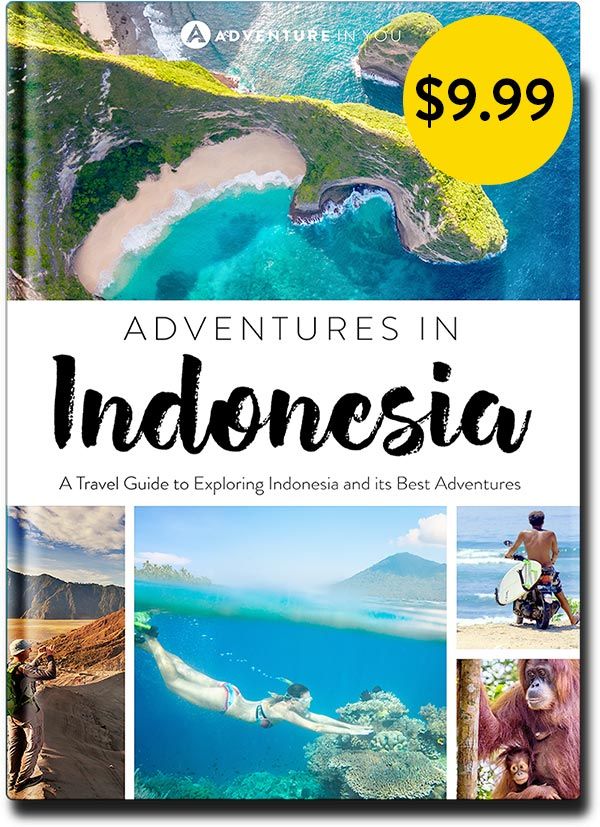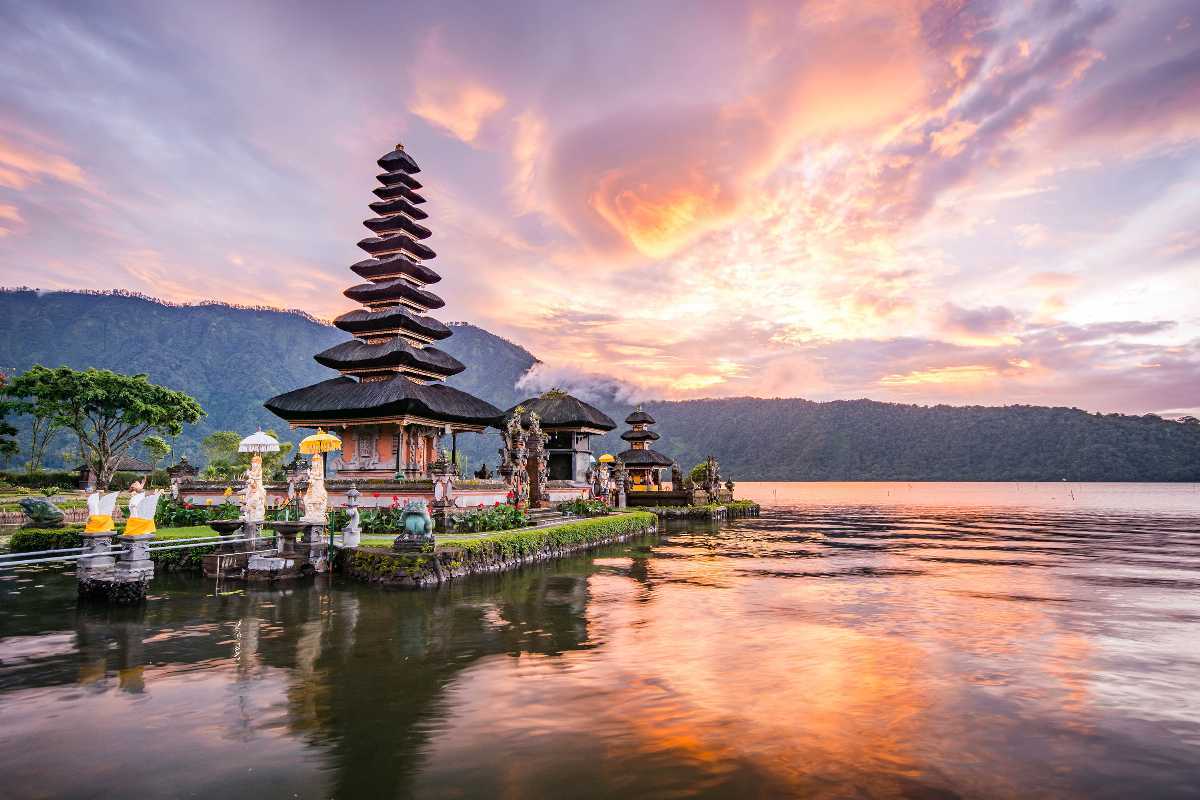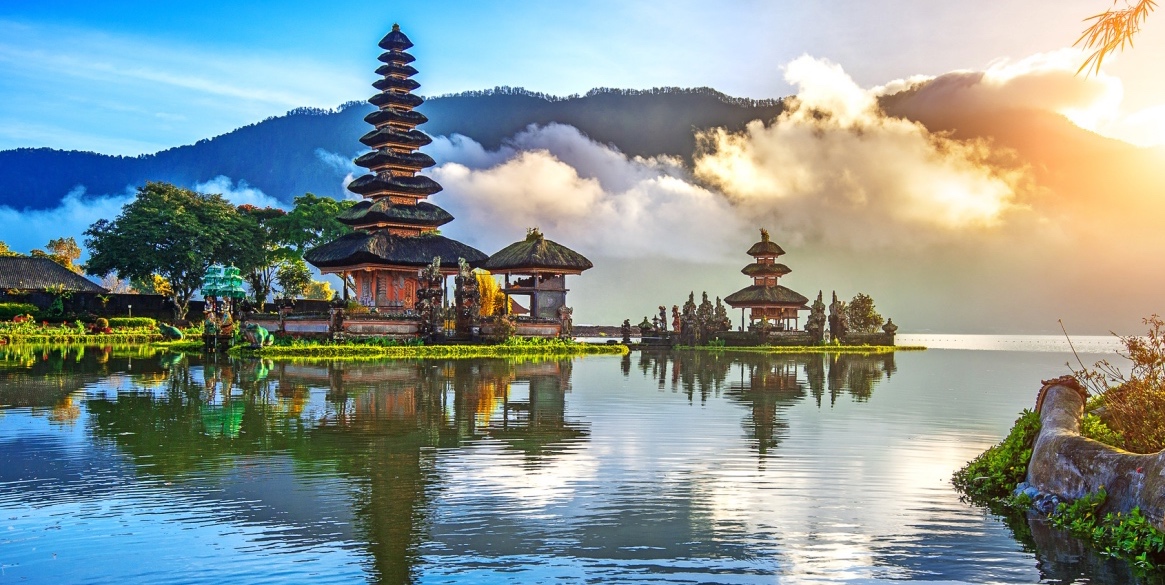
Indonesia, the world’s largest archipelago, is a captivating mosaic of over 17,000 islands, each boasting its own unique culture, landscape, and history. From the bustling metropolis of Jakarta to the serene rice paddies of Bali, from the fiery volcanoes of Java to the pristine beaches of Raja Ampat, Indonesia offers a kaleidoscope of experiences that will leave you spellbound. This comprehensive guide will equip you with the knowledge you need to plan an unforgettable journey through this enchanting nation.
A Tapestry of History and Culture:
Indonesia’s history is a rich and complex tapestry woven from ancient kingdoms, colonial influences, and a vibrant indigenous heritage. Evidence of early hominids dates back millions of years, and the archipelago has been a crucial crossroads for trade and cultural exchange for centuries.

Related Articles about Indonesia: A Comprehensive Travel Guide to the Emerald of the Equator:
- Beyond the Veil: Unveiling the Wonders of Saudi Arabia for the Discerning Traveler
- A Traveler’s Tapestry: Your Comprehensive Guide to Sri Lanka
- An Odyssey Through the Heights: Your Essential Guide to the Swiss Alps
- Ascending to the Gods: Your Essential Guide to Visiting the Acropolis of Athens
- Oceania: A Tapestry of Islands, Cultures, and Unforgettable Adventures
- Early Kingdoms: From the 7th to 14th centuries, powerful kingdoms like Srivijaya and Majapahit flourished, spreading their influence across the region. These kingdoms left behind impressive archaeological sites like Borobudur and Prambanan, testaments to their artistic and architectural prowess.
- The Rise of Islam: Islam arrived in Indonesia in the 13th century, primarily through trade, and gradually became the dominant religion. The blending of Islamic beliefs with existing Hindu-Buddhist traditions resulted in a unique and syncretic form of Islam practiced across the archipelago.
- Colonial Era: European powers, primarily the Dutch, began arriving in the 16th century. The Dutch East India Company gradually gained control, establishing a colonial presence that lasted for over three centuries. This period left a significant mark on Indonesian culture, infrastructure, and legal systems.
- Independence and Modern Indonesia: After a long and arduous struggle, Indonesia declared its independence in 1945 under the leadership of Sukarno. Today, Indonesia is a diverse and dynamic nation, grappling with issues of development, democracy, and national identity.
Top Attractions: A Journey Through Diverse Landscapes and Cultures:
Indonesia offers a staggering array of attractions to suit every type of traveler. Here’s a glimpse of some of the must-see destinations:
- Bali: The Island of Gods: Bali is undoubtedly Indonesia’s most famous island, renowned for its stunning beaches, lush rice terraces, ancient temples, and vibrant arts scene.
- Ubud: The cultural heart of Bali, Ubud is a haven for artists, yogis, and nature lovers. Explore the Tegalalang Rice Terraces, visit the Monkey Forest Sanctuary, and immerse yourself in traditional Balinese dance performances.
- Seminyak & Canggu: These coastal towns offer a more sophisticated and trendy vibe, with upscale restaurants, boutique shops, and world-class surfing beaches.
- Uluwatu: Home to dramatic cliffs, stunning beaches, and the iconic Uluwatu Temple, this region is a surfer’s paradise and a photographer’s dream.
- Java: The Heart of Indonesia: Java is the most populous island in Indonesia and the center of political and economic power. It’s also home to some of the country’s most impressive historical and natural wonders.
- Borobudur: This magnificent 9th-century Buddhist temple is a UNESCO World Heritage Site and one of the largest Buddhist monuments in the world. Witnessing the sunrise over Borobudur is an unforgettable experience.
- Prambanan: Another UNESCO World Heritage Site, Prambanan is a complex of Hindu temples dedicated to Shiva, Vishnu, and Brahma. The intricate carvings and towering structures are a testament to the artistry of the ancient Javanese civilization.
- Mount Bromo: This active volcano in East Java is a popular destination for adventurous travelers. Hike to the crater rim for breathtaking views of the surrounding volcanic landscape.
- Yogyakarta: The cultural capital of Java, Yogyakarta is a hub for traditional arts, music, and dance. Visit the Sultan’s Palace (Kraton), explore the Water Castle (Taman Sari), and learn about batik making.
- Komodo National Park: Land of the Dragons: This UNESCO World Heritage Site is home to the Komodo dragon, the world’s largest lizard. Explore the islands by boat, hike through rugged landscapes, and marvel at these prehistoric creatures in their natural habitat.
- Raja Ampat: Underwater Paradise: Located in West Papua, Raja Ampat is a diver’s and snorkeler’s paradise, boasting the highest marine biodiversity in the world. Explore pristine coral reefs, swim with manta rays, and discover hidden lagoons.
- Lake Toba: A Volcanic Wonder: This massive crater lake in North Sumatra is one of the largest and deepest lakes in the world. Explore the island of Samosir in the center of the lake, learn about the Batak culture, and enjoy the stunning scenery.
- Sumatra: The Land of Adventure: Sumatra is a vast island offering diverse landscapes, from rainforests and volcanoes to stunning beaches and cultural experiences.
- Bukit Lawang: Located in Gunung Leuser National Park, Bukit Lawang is a popular starting point for trekking to see orangutans in their natural habitat.
- Lake Maninjau: A serene crater lake surrounded by picturesque villages and rice paddies.
- Medan: A bustling city known for its colonial architecture and delicious cuisine.

Travel Tips for a Smooth Journey:
- Visa Requirements: Check visa requirements based on your nationality before traveling. Many nationalities are eligible for visa-free entry or visa on arrival.
- Language: The official language is Bahasa Indonesia. While English is spoken in tourist areas, learning a few basic Indonesian phrases will be greatly appreciated.
- Currency: The currency is the Indonesian Rupiah (IDR). ATMs are widely available in major cities and tourist areas.
- Bargaining: Bargaining is common in markets and with street vendors. Be polite and respectful, and don’t be afraid to negotiate.
- Respect Local Customs: Indonesia is a predominantly Muslim country. Dress modestly when visiting religious sites and be mindful of local customs and traditions.
- Health and Safety: Consult your doctor about necessary vaccinations and health precautions. Drink bottled water and be aware of food safety standards.
- Transportation: Getting around Indonesia can be an adventure in itself.
- Internal Flights: A convenient and affordable way to travel between islands.
- Trains: A comfortable and scenic way to travel across Java.
- Buses: A budget-friendly option for long-distance travel. Be prepared for crowded conditions.
- Ferries: Connect various islands and offer a unique travel experience.
- Ojek (Motorbike Taxis): A quick and convenient way to navigate cities. Negotiate the price beforehand.
- Taxis and Ride-Sharing Apps: Widely available in major cities.
- Accommodation: Indonesia offers a wide range of accommodation options to suit every budget, from budget-friendly guesthouses and hostels to luxurious resorts and villas.
- Budget Guesthouses: Found throughout Indonesia, offering basic amenities and a chance to connect with local culture.
- Mid-Range Hotels: Provide comfortable rooms, amenities, and often include breakfast.
- Luxury Resorts and Villas: Offer world-class service, stunning views, and exclusive experiences, particularly in destinations like Bali and Raja Ampat.
- Homestays: A great way to experience local life and support local communities.
Best Time to Visit:
The best time to visit Indonesia is during the dry season, which runs from May to September. This period offers sunny skies, lower humidity, and fewer mosquitoes. The shoulder seasons (April and October) can also be pleasant, with fewer crowds and lower prices. The wet season (November to March) can bring heavy rainfall and high humidity, especially in Sumatra and Kalimantan. However, some regions, like Raja Ampat, are best visited during the shoulder seasons for optimal diving conditions.
Food: A Culinary Adventure:
Indonesian cuisine is a vibrant and diverse culinary adventure, reflecting the country’s rich cultural heritage and abundant natural resources. From spicy curries and flavorful satays to fresh seafood and aromatic rice dishes, Indonesia offers a tantalizing array of flavors and textures.
- Nasi Goreng: Fried rice, a national staple, often served with a fried egg, vegetables, and various toppings.
- Gado-Gado: A traditional Indonesian salad with boiled vegetables, tofu, tempeh, and a peanut sauce dressing.
- Satay: Grilled meat skewers marinated in spices and served with peanut sauce.
- Rendang: A rich and flavorful beef stew slow-cooked in coconut milk and spices.
- Soto: A traditional Indonesian soup, often made with chicken or beef, vegetables, and noodles.
- Mie Goreng: Fried noodles, similar to nasi goreng but with noodles instead of rice.
- Sambal: A chili-based sauce that is a staple in Indonesian cuisine.
Indonesia is more than just a destination; it’s an experience. From the warmth of its people to the beauty of its landscapes, this archipelago will captivate your senses and leave you with memories that will last a lifetime. So, pack your bags, embrace the adventure, and prepare to be enchanted by the emerald of the equator.







